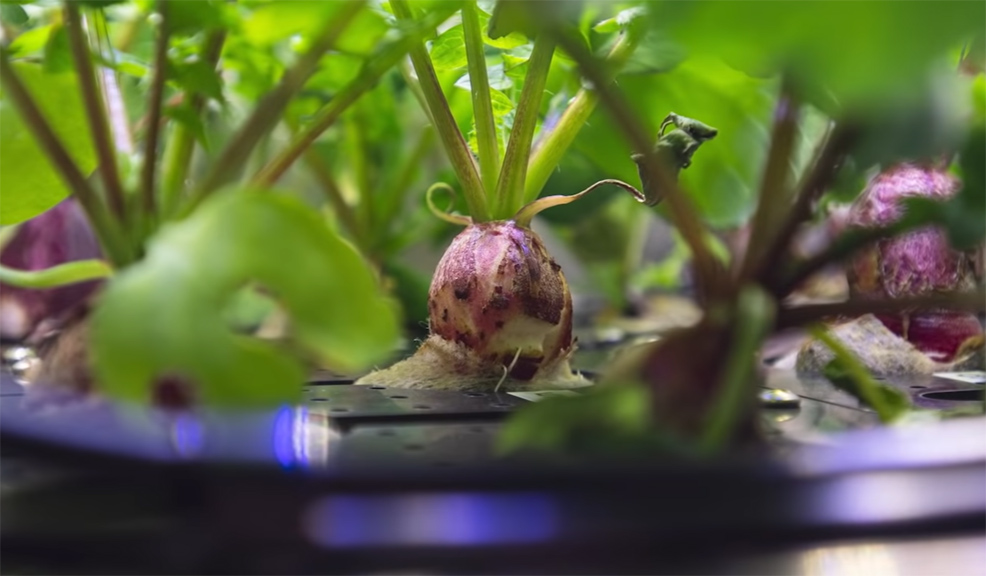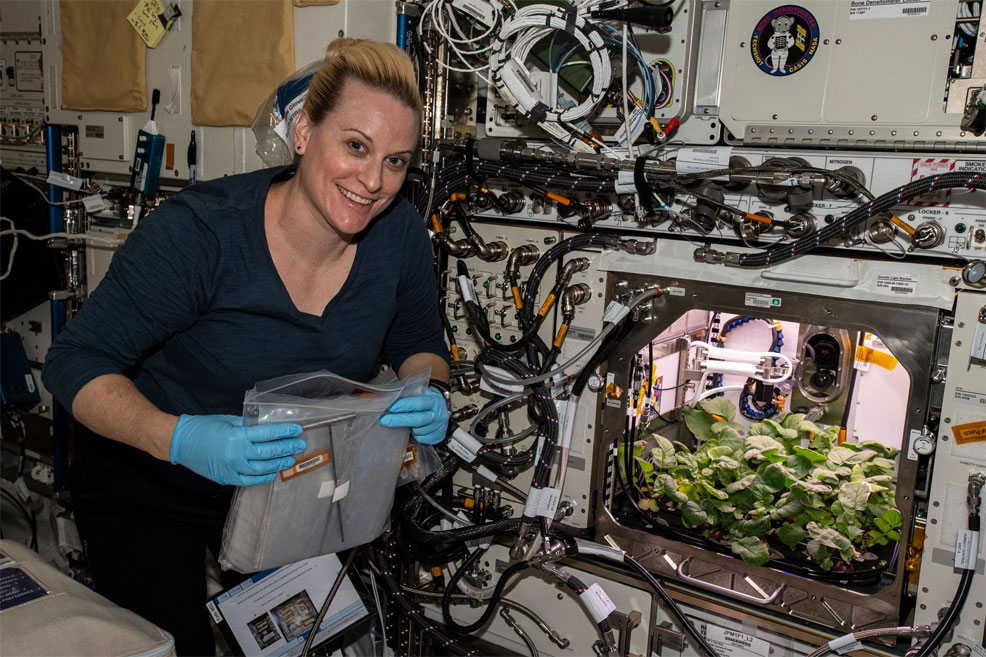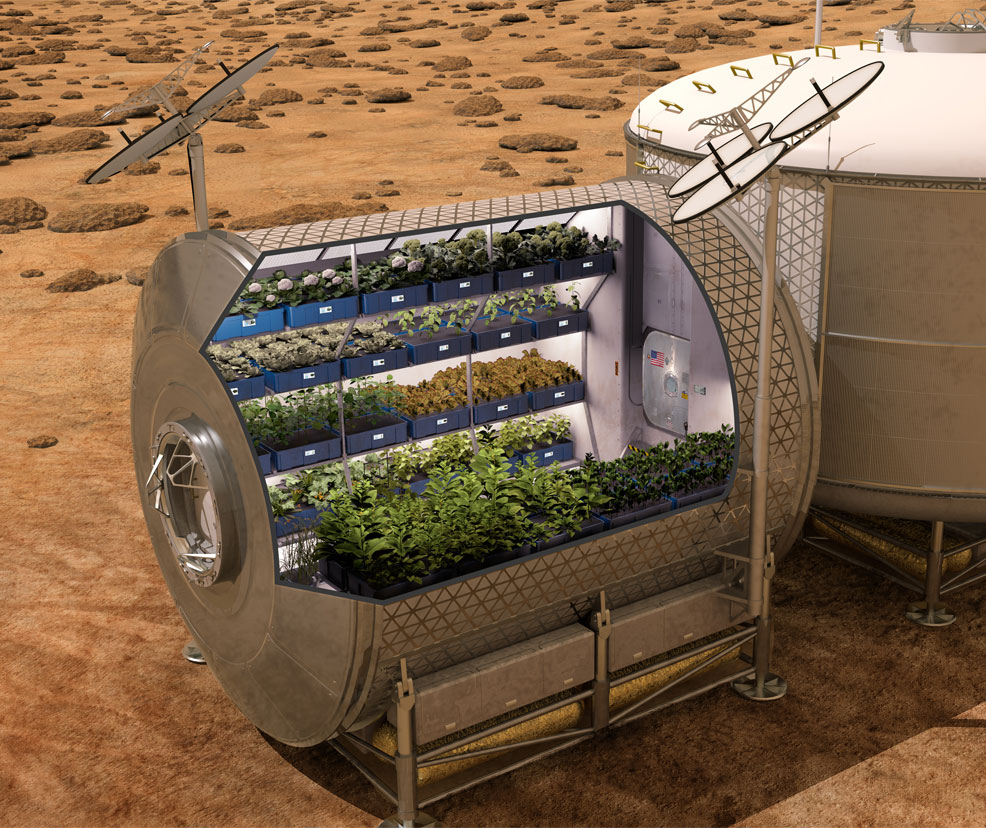
7th December 2020 Radishes grown in space for first time Astronauts on the International Space Station (ISS) have collected the first harvest of radishes grown on the station.
The growth of plants in outer space has generated much scientific interest in recent decades. For human crews in orbit, plants could greatly improve the prospects for long-term survival and self-sustainability. Plants could be consumed as food and/or provide a refreshing atmosphere. Plants can metabolise carbon dioxide (CO2) in the air to produce oxygen for breathing or other uses, and can help control cabin humidity. Growing plants in space may also provide a psychological benefit to human spaceflight crews. The first major challenge for growing plants in space is the absence of gravity. This presents difficulties in terms of the effects on root development, such as nutrient supplies to a root, as well as the nutrient biogeochemical cycles, and complex microbiological interactions in soil-based substrates. Plants also need to be optimised with appropriate types of lighting, the right amount of water, and other environmental conditions. NASA's latest plant experiment, called Plant Habitat-02 (PH-02), is the first time that radishes have been grown on the orbiting laboratory. Kate Rubins is a microbiologist on Expedition 64, the current long-duration mission to the ISS, which began on 21st October 2020 and runs until 18th April 2021. She used the station's Advanced Plant Habitat (APH) to cultivate radishes, a model plant that is nutritious, edible and develops quickly.
Unlike previous experiments in the APH, which used porous clay material preloaded with a slow-release fertiliser, this trial relies on precisely defined quantities of provided minerals. Such precision allows for a better comparison of nutrients provided to and absorbed by the plants. The chamber uses red, blue, green and broad-spectrum white LED lights to provide a variety of light for stimulating plant growth. Sophisticated control systems deliver water, while cameras and more than 180 sensors allow researchers at NASA's Kennedy Space Center to monitor the plant growth in detail, as well as regulate moisture levels, temperature, and CO2 concentration. While growing inside the habitat, the radishes required little maintenance from the ISS crew. On 30th November, Rubins harvested 20 radish plants – meticulously collecting each and wrapping them in foil, then placing them in cold storage for the trip down to Earth in 2021 on a SpaceX return mission. "Radishes are a different kind of crop compared to leafy greens that astronauts previously grew on the space station, or dwarf wheat which was the first crop grown in the APH," said Nicole Dufour, NASA APH program manager at Kennedy Space Center. "Growing a range of crops helps us determine which plants thrive in microgravity and offer the best variety and nutritional balance for astronauts on long-duration missions."
"Radishes provide great research possibilities by virtue of their sensitive bulb formation," said Karl Hasenstein, the study's principal investigator and a professor at the University of Louisiana at Lafayette. "We can grow 20 plants in the APH, analyse CO2 effects, and mineral acquisition and distribution." The team has set up a control population of plants for a ground-based habitat chamber inside the Kennedy Space Station Processing Facility. Radishes have been growing under nearly identical conditions there since 17th November, and researchers will harvest the control crop on 15th December for comparison with the radishes grown on the ISS. Professor Hasenstein hopes to learn how space conditions like weightlessness affect radish growth, and how well the light response and metabolism resembles Earth-grown plants. The APH machine has two science carriers – so shortly after the first harvest, the second carrier will be used to repeat the experiment by planting another set of radish seeds. Replicating the plant experiment will increases the sample size and improve scientific accuracy. "It's a privilege to help lead a team that is paving the way to the future of space crop production for NASA's exploration efforts," said Dufour. "I've worked on APH since the beginning, and each new crop that we're able to grow brings me great joy, because what we learn from them will help NASA send astronauts to Mars and bring them back safely."
--- Follow us: Twitter | Facebook | Instagram | YouTube
Comments »
If you enjoyed this article, please consider sharing it:
|









